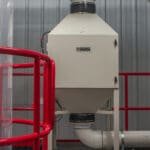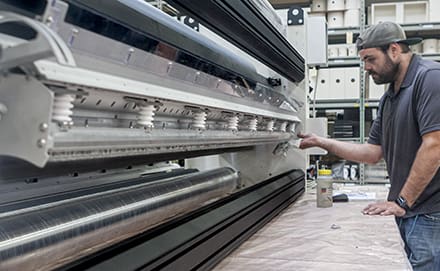High Definition Corona for Converting

How do you evaluate the performance of your corona treater?
Most converters measure dyne level. That’s a good start. But dyne level only measures wetting out. The real test is the ability of a corona treater to promote adhesion to your satisfaction.
Consider this: it is not unheard of for two different corona treaters to produce the same dyne level, but yield different adhesion results. How can this be? Obviously, all corona is not created equal.
High Definition corona treatment
Look at Figure 1. These photos contrast corona generated by different systems. Which corona treater do you think produces better adhesion results? Clearly the corona treater that generates smoother, higher density and more uniform corona provides superior treatment and ultimately better adhesion results.

Uniform and High Powered
High definition corona increases your likelihood of adhesion success, but your corona system must also handle the power requirements of your application. Three elements determine the effectiveness of the applied watt density: the film, the electrode and the base (ground) roll. Power generator size is dependent on the application and the effectiveness of the electrode/roll configuration.
High Powered Electrodes
You’re probably aware that ceramic electrodes are less sensitive to high operating temperatures than their metal counterparts. But like corona, not all ceramic electrodes are created equal. Enercon’s “H” system features specially constructed ceramic electrodes with an extremely high dielectric constant and superior capability for high power densities. Enercon maximizes the electrodes’ capabilities with a unique cooling system that acts as an electrode temperature stabilizer.
The cooling system also deftly doubles as an ozone removal system. Applying 50% more power per square inch to each electrode results is a higher treatment level (See Table 1). In some cases, this means fewer electrodes are required to generate the same treatment level.
High Performance Ceramic Roll Blend
The roll coating’s ability to dissipate heat generated during the treating process is critical. Heat buildup on covered rolls is very destructive and can only be mitigated by increasing the roll diameter to allow a period of cooling between cyclic positioning under the electrode.
An alternate solution is to use a ceramic coating. However, not all ceramic coatings are created equal. Unlike conductive ceramic roll systems, Enercon’s “H” system features a proprietary ceramic blend formulation optimized for numerous application challenges. First, it is highly effective at withstanding the heat generated by treating. This allows high treatment levels from a small footprint (See Figure 2).

As converters are required to run thinner and thinner webs, material handling benefits are a huge plus. The “H” system virtually eliminates film wrinkling, puckering, pin holing and backside treatment. Add to these benefits that this system has the ability to treat both conductive and non-conductive films.
One or two of these benefits alone are often reason enough to select the “H” system. When taken all together, you can see why this is truly a universal system.
System Flexibility
Enercon’s “H” system is the converters number one choice because it delivers high performance corona treatment results on conductive and non-conductive materials, minimizes the chances of roll covering burnout and provides the industry’s best insurance against pin holing, backside treatment and film wrinkling.
All these benefits combine to provide you with a safer operating window for all of your applications.
So, there you have it. Not all corona is created equal because not all electrodes and rolls are created equal. Once you try Enercon’s high definition corona treater, you won’t settle for anything less!
| Table 1: Comparative results show the effectiveness of high definition surface treatment. | ||||
| Pretreated BOPP Pretreated BOPP | Watt Density | |||
| 2 | 4 | 6 | ||
| Conductive Ceramic Dynes | 40 | 42 | 44 | |
| “H” System Dynes | 44 | 48 | 52 | |
| Untreated BOPP | Watt Density | |||
| 2 | 4 | 6 | ||
| Conductive Ceramic Dynes | 36 | 37 | 37 | |
| “H” System Dynes | 39 | 40 | 42 | |
















